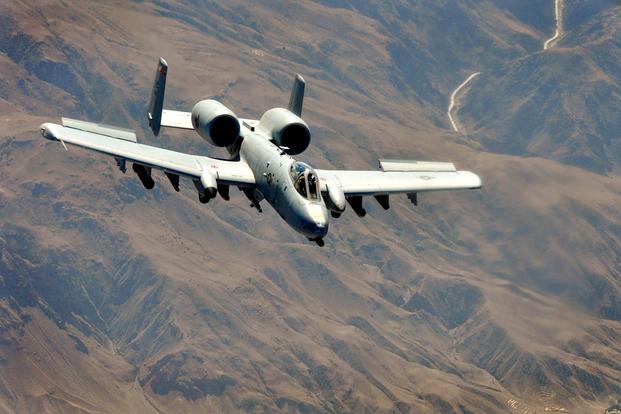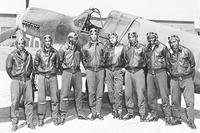A-10 Thunderbolts could return to close-air support missions in Afghanistan as the wars in Iraq and Syria wind down and the Trump administration's new strategy for Afghanistan takes hold.
In response to reports that Afghan leaders had asked the U.S. to bring back the "Warthogs," Air Force Brig. Gen. Lance Bunch said he could not speculate but also did not rule out that the aircraft with the devastating 30mm nose gun might be back in action over Afghanistan in the spring.
"The discussions of what forces we move to Afghanistan or draw down from Iraq and Syria are all ongoing," Bunch, director of future operations for the NATO Resolute Support mission, said in a briefing to the Pentagon from Kabul on Tuesday.
"We have not made any decisions at this time to move A-10s, that I know of," he said.
Military Times reported that a senior Afghan official had asked for the return of the A-10s to support planned offensives by the Afghan National Defense and Security Forces [ANDSF].
A-10s were used extensively in Afghanistan in earlier stages of the war and have in recent years been flying out of Turkey on anti-ISIS missions in Iraq and Syria.
On Monday, Air Force Secretary Heather Wilson told the Senate Armed Services Committee that she backs proposals to upgrade the wings of the A-10s to extend their service life.
"I happen to be a fan of the A-10," she said.
In his briefing to the Pentagon, Bunch described missions that appeared well-suited for the A-10s under the new strategy for Afghanistan approved by President Donald Trump in August.
The strategy includes a stepped-up air campaign and combat support for U.S. troops now cleared to work with partnered ANDSF forces at the battalion level.
"Previously, the mission here in Afghanistan was on a shrinking path," Bunch said but, under the new strategy, ground and air commanders have more latitude to pick targets as "we transitioned from a time-based mission to one that is now conditions-based."
For the first time in the Afghanistan war, now in its 17th year, the U.S. air campaign has gone after the Taliban's main source of funding in the poppy trade, Bunch said.
"Since the beginning of this campaign, we have eliminated 25 narcotics processing labs from the Taliban inventory," he said.
"These are new efforts that have never been tried before in Afghanistan," Bunch said. "These are new; the war has changed."
"We are able to go after their [Taliban] weapons cache sites, their revenue generation, their C2 [command and control] nodes -- all the areas where they thought they were safe and they are no longer so," he said. "It has definitely been a game-changer, and the Taliban is definitely feeling it."
-- Richard Sisk can be reached at Richard.Sisk@Military.com.










